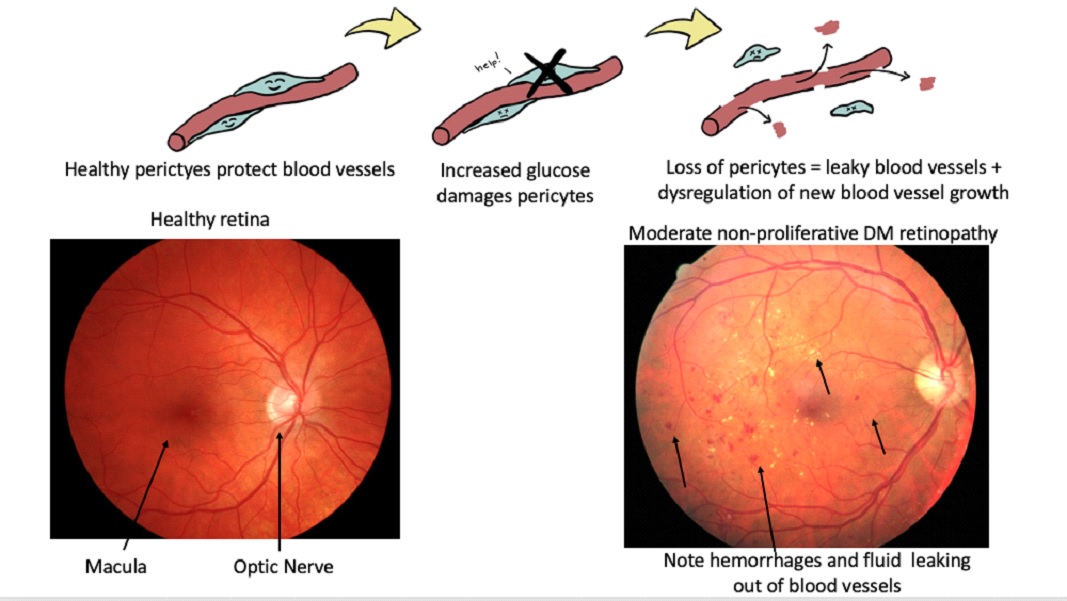Diabetes is a dysfunction of the endocrine system of the body, specifically the cells of the pancreas that produce insulin. When these beta cells can’t produce insulin anymore (or we develop insulin-resistance), our body develops an inability to absorb glucose. All of this increased sugar floating around in our system causes a lot of inflammation and damage to all the little blood vessels all over our body, especially the small capillaries and the venous system.
This especially affects a few places in particular; the nerves, heart, feet, the kidneys, and eyes.
Diabetes is the number one cause of preventable blindness in North America. Type 1, Type 2, and even Gestational diabetes, all put you at risk for diabetic retinopathy. After 15 years with diabetes, 60-80% of people are found to have some level of retinopathy.
What structures in the eye are affected by fluctuating glucose levels?
- The lens – can swell with high blood sugar levels. This causes intermittent near-sightedness
- The blood vessels – in the anterior part of the eye (can raise eye pressure and cause glaucoma if new vessels form in the angle structure that drains fluid out of the eye), or the posterior part of the eye (can cause retina detachments)
- The retina – hemorrhages or fluid from leaky blood vessels can cause fluid buildup in the retina. If this occurs in the macula (the part of the retina responsible for detailed vision), injections are required to help facilitate removal of this liquid before the photoreceptors become permanently damaged.
The Ontario Association of Optometrists recommends yearly eye exams if you are diagnosed with diabetes, and your optometrist may recommend closer follow-up if any findings or complications arise. As diabetes can seriously affect your eyes, all diabetic eye exams are covered by OHIP regardless of age.
To help manage your blood sugar, remember your diabetes “ABCDEs” and to follow-up with your primary care doctor or endocrinologist regularly.
- A1c: your blood sugar reading over a 3-month period should be <7%
- Blood pressure control
- Cholesterol control
- Diet
- Exercise

